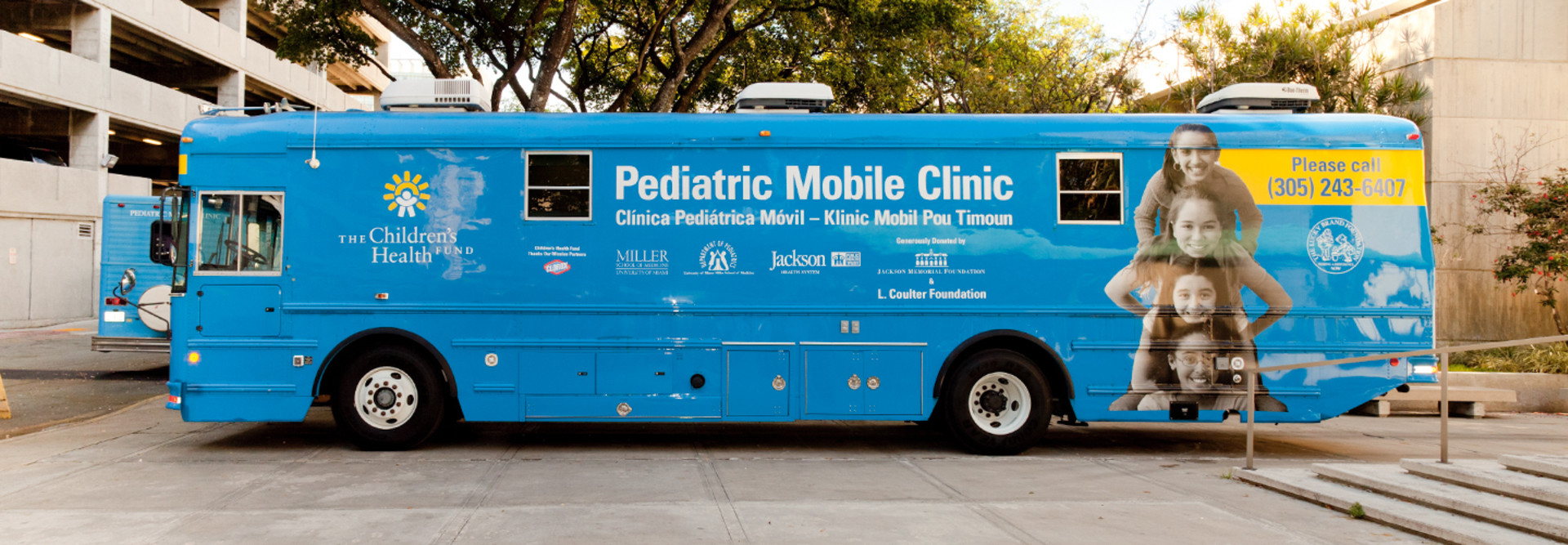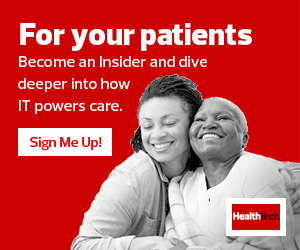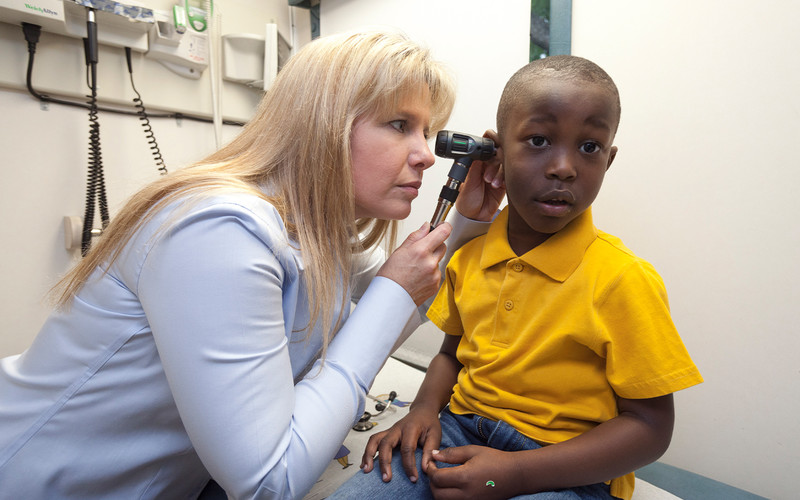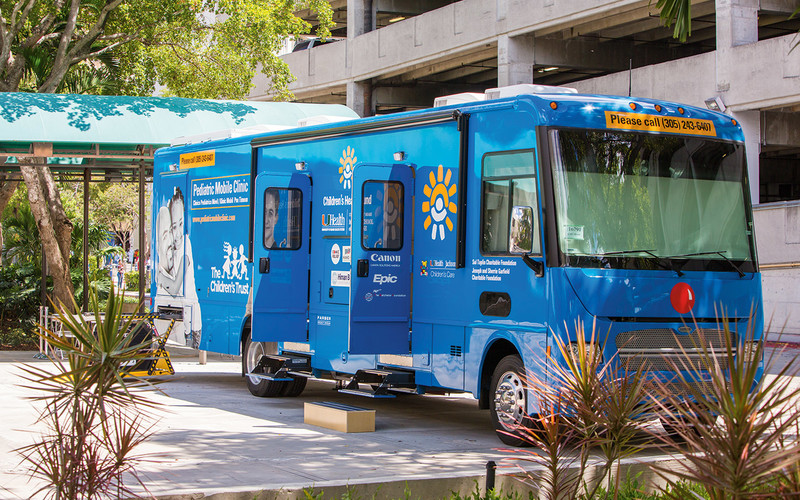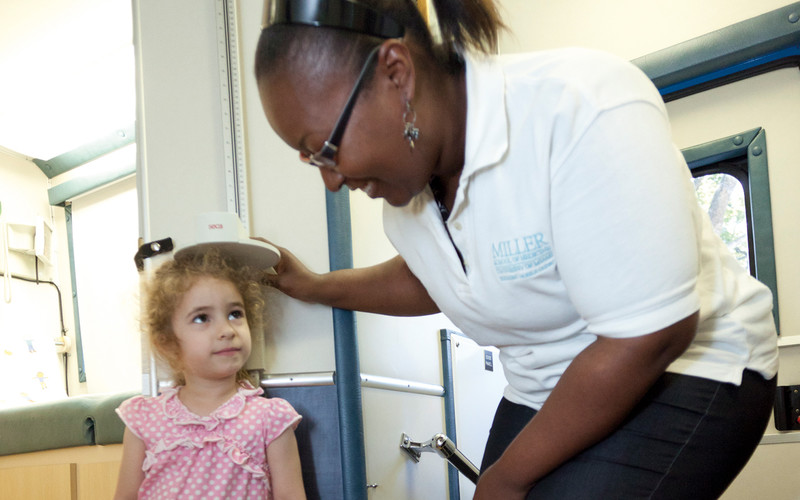At the University of Miami’s Miller School of Medicine, mobile clinics serve a special group: children. What started as a disaster response initiative after Hurricane Andrew in 1992 is now a dedicated pediatrics program, housed in a 40-foot bus that delivers care to about 3,000 patients annually.
“Many come in and have never seen a dentist, haven’t seen a doctor for years, certainly never had access to specialty care,” says Dr. Lisa Gwynn, medical director of the University of Miami’s Pediatric Mobile Clinic. “We spend a lot of time connecting those kids to as many resources as we possibly can.”
Providing Specialty Care via Telemedicine
Like most mobile clinics, Miami’s program serves low-income people whose access to care is constrained by a lack of insurance, transportation and paid sick leave. In Miami-Dade County, that includes diverse immigrant communities from Little Haiti to Doral, home to a large Venezuelan population. Residents can find the mobile clinic stationed at a school, church or community center.
Technology has become increasingly important to mobile operations, streamlining workflows and making it easier for providers to connect patients with resources. For the Pediatric Mobile Clinic, acquiring a secure internet connection and moving to electronic health records was a game changer, Gwynn says.
That provided a foundation for the clinic’s next big initiative: telemedicine. A provider on the bus uses a telemedicine kit — including a laptop, software, USB plug-ins for digital stethoscopes and electrocardiogram machines, and videoconferencing — to connect patients with remote providers.
“Our biggest accomplishment was in cardiology, because the cardiologist could actually see the EKG tracing right there on her screen, and she could hear the heart sounds,” Gwynn says. “These are patients who would never have had an opportunity to have that type of care.”
To overcome language barriers, the team uses a videoconferencing application that connects to live translators via iPad devices. .
Two years ago, the Pediatric Mobile Clinic built a new unit from the ground up, including computers and large screens that serve as monitors and display educational content. In the process, it was essential to assemble a technology team that understood the clinic’s unique requirements, Gwynn says.
“You have to have specific people within the IT department who understand your equipment,” she adds.
In addition to experts in networking, desktops and software, HIPAA compliance, telehealth and EHR, Gwynn’s team worked with Verizon engineers to ensure all of the clinic’s service locations had connectivity.
Now, the new unit provides screenings and other care, while the older unit is being renovated to provide immunizations, including COVID-19 vaccines.
“To be able to solve public health issues through mobile medicine — through a program that is just dedicated to taking care of the underserved — it’s been truly remarkable and extremely rewarding,” Gwynn says.
READ MORE: Healthcare providers continue to adapt to changing care environments.
Rugged Devices Create New Workflows and Opportunities
In California, AltaMed Health Services treats about 300,000 patients annually in Los Angeles and Orange counties. Routine, preventive and chronic disease care are complemented by behavioral health, pediatrics and geriatrics services.
“It doesn’t matter if you live in Beverly Hills or the middle of East LA; you deserve to have access to healthcare,” says Dr. Ilan Shapiro, medical director of health and wellness education.
A few months before the COVID-19 pandemic hit, AltaMed received a surprise donation from Panasonic: 125 Toughbook devices. These rugged, handheld tools turned out to be pivotal during the pandemic, allowing providers to replace paper-based processes with digital workflows and easy-to-clean equipment that can withstand accidental drops and spills and that performs outdoors just as well as indoors.



